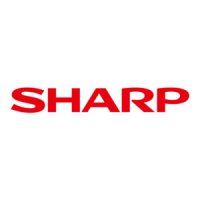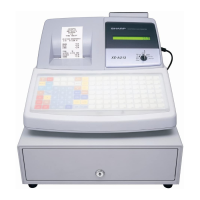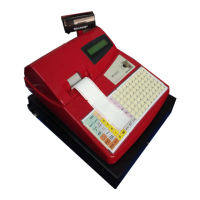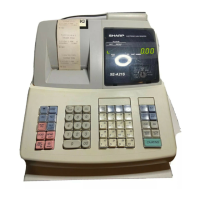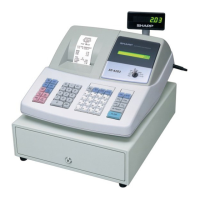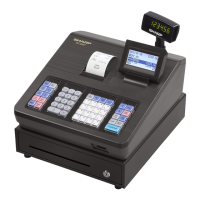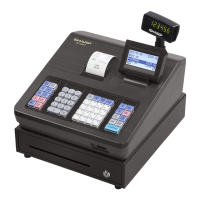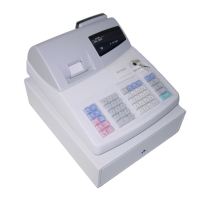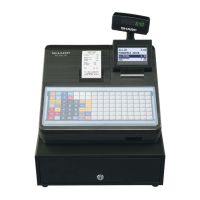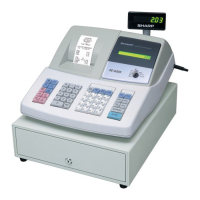Do you have a question about the Sharp XE-A217W and is the answer not in the manual?
Covers essential safety guidelines for operating the cash register, including handling batteries and electrical connections.
Diagrams illustrating the front and rear views of the XE-A207 and XE-A217 cash register models.
Details about the thermal printer type, its specifications, and handling cautions for safe operation.
Visual representation of keyboard layouts and a list of function key operations for different models.
Identification and location of the RS232 communication port and the SD card slot on the register.
Explanation of the operator display layout, areas, and status indicators for transaction and mode information.
Display of the mode selection window that appears upon register startup.
List and brief description of the register's supported operating modes (REG, OP XZ, OFF, VOID, etc.).
Instructions on setting up the receipt paper roll and clerk sign-on procedures.
Procedures for recognizing and resolving common error states displayed on the register.
How to select functions from menus and the procedure for entering starting cash.
Detailed steps for entering single items via department or PLU codes.
Procedures for entering multiple identical items, quantities, and split pricing.
Functionality for quick cash sales and managing PLU levels for direct PLUs.
How to view subtotals and complete transactions using various tender types.
How to void the most recent entry made on the register using the void key.
Methods for correcting entries before finalizing a transaction using cursor or sequence operations.
Procedures for voiding subtotals and correcting entries after transaction finalization.
How to print a duplicate receipt, even if receipt printing was initially turned off.
Function to print a copy of a guest check bill for customer records.
Steps to enter the manager mode and its purpose for overriding limitations and performing tasks.
Procedures for reading sales data (X reports) and resetting totals (Z reports).
Details on generating general reports, including sample X and Z report formats.
Visual guides to keyboard layouts used during the programming process.
Methods for entering text and characters using mobile phone or PC keyboard input.
Guide to inputting characters using numerical codes for programming.
Procedures for programming merchandise items, including departments, PLUs, and PLU ranges.
Configuration of discounts, percentages, payment media, and other functional keys.
Setting up clerk/manager details, terminal settings, and date/time.
Managing function access, print options, and report generation configurations.
Configuring messages, devices, tax, auto keys, and SD card operations.
Steps to read and view stored programs via the PGM mode.
Managing journal data, including reporting, resetting, and clearing entries.
Setting EURO status and configuring automatic modification operations.
Specifics on scheduling, executing, and enforcing EURO modification operations.
Procedures for power outages, printer stalls, and error conditions.
Guidelines for safely handling the printer, print head, and recording paper.
Instructions for installing and replacing batteries, including safety precautions.
Procedures for installing a new paper roll and clearing paper jams.
Methods for cleaning printer components and handling the cash drawer.
Guide on how to install the bracket for securing the register.
| Number of clerks/departments | 25 |
|---|---|
| Number of programmable VAT rates | 4 |
| Supported paper width | 58 mm |
| Backlight | Yes |
| Display digits | 20 digits |
| Second display type | LED |
| Second display number of characters | 7 |
| Power source | AC |
| Operating temperature (T-T) | 0 - 40 °C |
| Depth | 425 mm |
|---|---|
| Width | 360 mm |
| Height | 365 mm |
| Weight | 11000 g |
